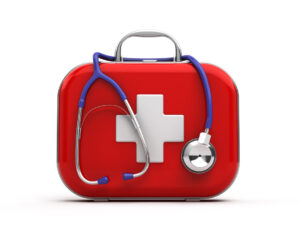- Understanding the MDR Technology
MDR technology, short for Medical Device Regulation technology, is a revolutionary approach that has completely transformed traditional medical practices. Unlike conventional methods, MDR technology leverages advanced algorithms and artificial intelligence to optimize diagnosis and treatment planning, leading to improved patient outcomes.
What is MDR technology and how does it differ from traditional approaches?
MDR technology is a cutting-edge solution that combines innovative software and hardware components to enhance medical diagnosis and treatment. Unlike traditional approaches, which heavily rely on manual analysis and human expertise, MDR technology automates various processes, reducing the chances of error and delivering more accurate results.
One of the key differences between MDR technology and traditional methods is the use of machine learning algorithms. By analyzing vast amounts of medical data, MDR systems can detect patterns and trends that may not be noticeable to a human observer. This advanced level of analysis allows for earlier detection of diseases and helps healthcare professionals make more informed decisions regarding treatment and care plans.
How has MDR technology revolutionized medical practices?
MDR technology has revolutionized medical practices in numerous ways. Firstly, it has significantly improved diagnostic accuracy. With access to extensive databases and the ability to analyze complex medical data in real-time, MDR systems can identify subtle abnormalities and indicators that may go unnoticed by human physicians.
Secondly, MDR technology has greatly enhanced treatment planning and decision-making processes. By analyzing a patient’s medical history, genetic information, and other relevant data, MDR systems can generate personalized treatment plans that take into account individual variations and factors that may affect treatment effectiveness. This level of precision reduces the likelihood of ineffective treatments and improves patient outcomes.
Lastly, MDR technology has expedited the process of collecting and sharing medical information. With electronic health records and interconnected systems, healthcare providers can access a patient’s complete medical history, test results, and treatment plans, regardless of location. This seamless flow of information improves collaboration among healthcare professionals and ensures continuity of care.
The impact of MDR technology on patient care and outcomes
The integration of MDR technology in healthcare has had a profound impact on patient care and outcomes. By providing more accurate diagnoses, MDR technology enables healthcare professionals to intervene earlier in the progression of diseases, leading to better prognosis and improved chances of recovery.
Moreover, MDR technology allows for personalized treatment approaches, taking into account individual variations and factors that may influence treatment effectiveness. This customization ensures that patients receive the most suitable and effective treatments, minimizing adverse effects and maximizing positive outcomes.
Additionally, MDR technology has streamlined the patient experience by reducing waiting times, enabling remote consultations, and allowing for more efficient monitoring of patients’ health conditions. This not only improves patient satisfaction but also contributes to better overall health management.
- The Advantages of MDR Technology in Medical Practice
MDR medical technology provides numerous advantages that position it as an essential tool in contemporary medical practice. With benefits ranging from heightened diagnostic precision to lowered healthcare expenses, MDR technology stands poised to transform healthcare provision and elevate patient outcomes.
Enhanced diagnostic accuracy with MDR technology
MDR medical technology improves diagnostic accuracy by leveraging advanced algorithms and data analysis. Through machine learning techniques, MDR systems can identify patterns and trends that may not be apparent to human physicians, leading to earlier detection of diseases and more accurate diagnoses.
For example, in the field of radiology, MDR technology can analyze medical images and identify subtle abnormalities or markers that may indicate the presence of a disease. This level of analysis can significantly improve the accuracy and speed of diagnoses, enabling healthcare professionals to provide timely and appropriate treatments.
How MDR technology improves treatment planning and decision-making
MDR technology plays a crucial role in treatment planning and decision-making processes. By analyzing vast amounts of patient data, such as medical history, genetic information, and treatment outcomes, MDR systems can generate personalized treatment plans that are tailored to individual patients.
With this level of customization, healthcare professionals can consider various factors that may affect treatment effectiveness, such as genetic predispositions, coexisting conditions, and medication interactions. This comprehensive approach ensures that patients receive the most appropriate and effective treatments, leading to better outcomes and improved quality of life.
Reducing healthcare costs through MDR technology
Another significant advantage of MDR technology is its potential to reduce healthcare costs. By improving diagnostic accuracy and optimizing treatment planning, MDR systems minimize the chances of unnecessary tests, procedures, and ineffective treatments, resulting in cost savings for both patients and healthcare providers.
Additionally, MDR technology enables remote patient monitoring and telemedicine, which reduces the need for in-person visits and hospital stays. This not only saves time and resources but also allows healthcare professionals to monitor patients’ health conditions more efficiently, intervening promptly when necessary.
Overall, MDR technology has the potential to transform healthcare delivery by making it more cost-effective, efficient, and patient-centered.
- Breakthrough Applications of MDR Technology
MDR technology has opened up new frontiers in healthcare, enabling breakthrough applications that were previously unimaginable. From precision medicine to early disease detection, MDR technology is transforming the way healthcare is delivered.
Using MDR technology for precision medicine and personalized treatment
MDR technology plays a crucial role in precision medicine, which focuses on tailoring treatments to individual patients based on their unique characteristics and needs. By analyzing large datasets and identifying patterns, MDR systems enable healthcare professionals to make more accurate predictions about which treatments will be most effective for specific patients.
For example, in oncology, MDR technology can analyze a patient’s tumor markers, genetic profile, and treatment history to determine the most suitable chemotherapy drugs or targeted therapies. This personalized approach improves treatment outcomes and reduces the chances of adverse effects.
MDR technology advancements in remote patient monitoring and telemedicine
MDR technology has revolutionized remote patient monitoring and telemedicine, enabling healthcare professionals to monitor patients’ health conditions from a distance and provide virtual consultations. This is particularly beneficial for patients with chronic conditions or those who live in remote areas with limited access to healthcare services.
Through wearable devices and connected sensors, MDR technology can collect real-time data on patients’ vital signs, activity levels, and medication adherence. This information is transmitted to healthcare professionals, who can then intervene if any abnormalities or concerns arise. This proactive approach to healthcare management improves patient outcomes and reduces the need for hospitalization.
The role of MDR technology in early disease detection and prevention
Early detection of diseases is crucial for effective treatment and improved outcomes. MDR technology plays a pivotal role in this area by analyzing medical data and identifying early signs and biomarkers of diseases.
For instance, in the case of cardiovascular diseases, MDR technology can analyze data from wearable devices and electronic health records to detect warning signs, such as abnormal heart rhythms or variations in blood pressure. This early detection enables healthcare professionals to intervene promptly and implement preventive measures, reducing the risk of complications and improving patient outcomes.
- Challenges and Future Possibilities of MDR Technology
While MDR technology offers immense potential, it also faces several challenges that need to be addressed. From concerns regarding data privacy and security to the need for improved healthcare access and equity, the future possibilities of MDR technology depend on overcoming these obstacles.
Addressing concerns regarding data privacy and security in MDR technology
As MDR technology relies on the collection and analysis of large amounts of patient data, concerns regarding data privacy and security have come to the forefront. It is essential to establish robust data protection measures, stringent regulations, and ethical standards to ensure that patient information is handled securely and confidentially.
Furthermore, transparent communication with patients regarding data usage and the implementation of effective consent mechanisms are crucial for building trust and ensuring the success of MDR technology in healthcare.
The potential of MDR technology in improving healthcare access and equity
MDR technology has the potential to bridge the gap in healthcare access and improve equity in healthcare delivery. By enabling remote consultations, virtual care, and remote patient monitoring, MDR technology can reach patients in remote areas or underserved communities, where access to healthcare services may be limited.
Additionally, MDR technology can facilitate the sharing of medical expertise and knowledge across geographic boundaries, allowing healthcare professionals to collaborate and provide guidance in areas where specialist care may not be readily available. This democratization of medical expertise has the potential to revolutionize healthcare delivery and improve patient outcomes worldwide.
Emerging trends and future developments in MDR technology
The field of MDR technology is rapidly evolving, with continuous advancements and innovations. Key emerging trends include the integration of MDR systems with other healthcare technologies, such as electronic health records and wearable devices, to create a seamless and interconnected healthcare ecosystem.
Moreover, the application of artificial intelligence and machine learning algorithms in MDR technology is expected to further enhance its capabilities, enabling even more accurate diagnoses, personalized treatments, and predictive healthcare analytics.
Furthermore, the widespread adoption of 5G technology and the Internet of Things (IoT) will facilitate real-time data transmission and analysis, making MDR technology more efficient and accessible.
In conclusion, MDR technology has revolutionized medical practices by offering enhanced diagnostic accuracy, personalized treatment planning, and reduced healthcare costs. Its breakthrough applications in precision medicine, remote patient monitoring, and early disease detection have transformed the way healthcare is delivered. While challenges regarding data privacy and healthcare access need to be addressed, the future possibilities of MDR technology are promising, with emerging trends and advancements paving the way for a more efficient, patient-centered, and equitable healthcare system.















